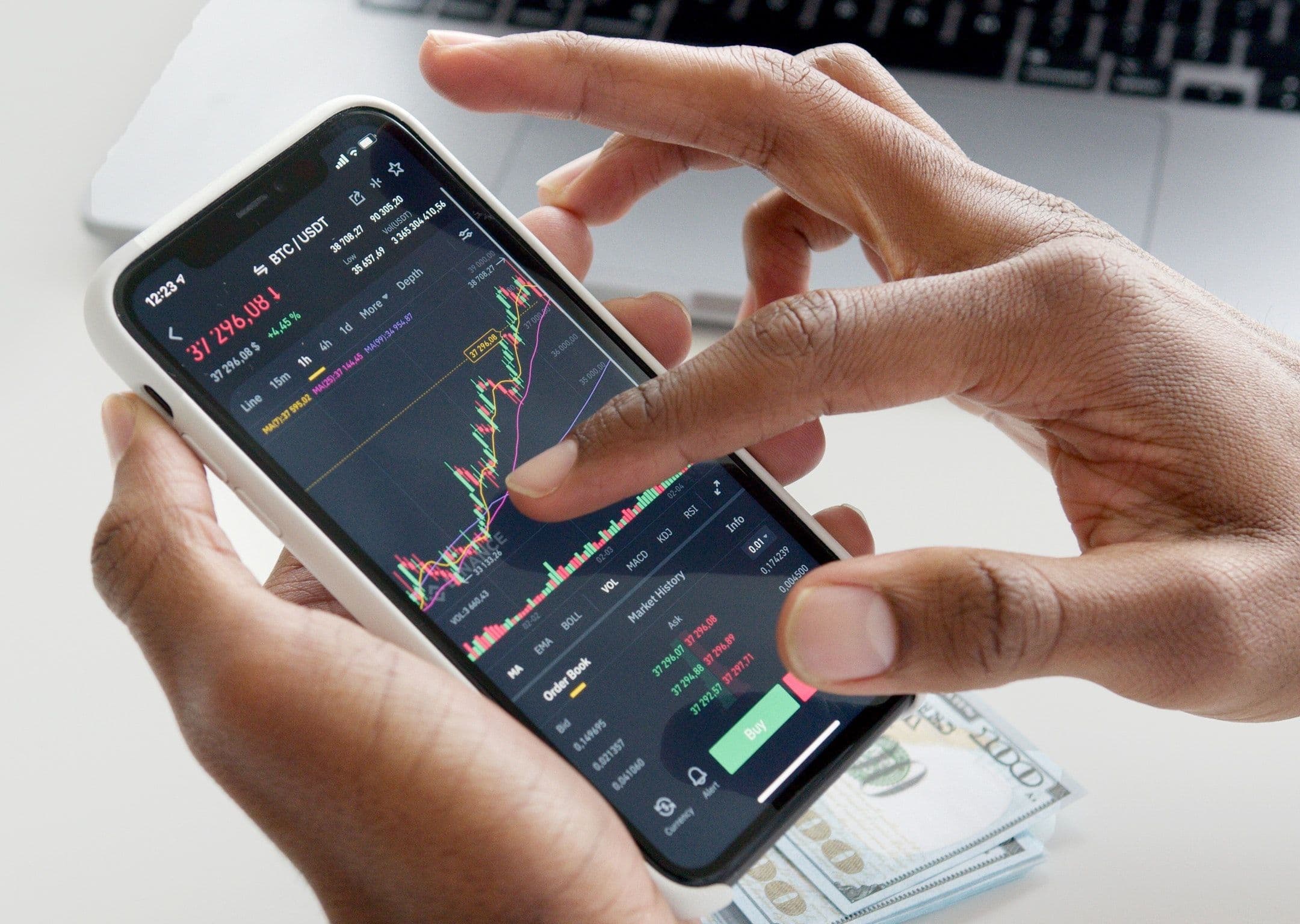descripción general

What Determines the Price of Crypto?
The crypto industry attracts people with the promise of making money. To make better trades and investments, many seek to understand what makes crypto prices go up, or down. Crypto is volatile, but this also creates opportunities for profit. What determines crypto prices? What makes crypto pump, or dump? In this article, we’ll be answering this question.
Supply and Demand
Prices for assets trading on the open markets are determined by the forces of supply and demand (i.e., how much of an asset is available to trade, and how much of it people want to buy). This principle applies to cryptocurrencies as well.
If demand outstrips supply, the price of a crypto asset tends to go up. Conversely, if supply overtakes demand the price generally falls.
Factors influencing supply and demand can be broadly categorized into:
- Fundamentals
- Macroeconomic influences
- Crypto market sentiment
- Technical factors
The factors in these categories are often interlinked in various ways and influence each other. A simple example of this would be the influence of macroeconomic factors on public attitudes toward crypto assets (crypto market sentiment).
Understanding Supply and Demand in Crypto
To grasp how crypto prices go up or down, one must also understand the characteristics of crypto supply. Unlike traditional assets, the mechanisms defining the supply of a cryptocurrency can vary wildly. These mechanisms are part of a crypto’s tokenomics and can be designed with complete freedom to match any particular use case or vision for the cryptocurrency. A simple example: Some tokens like Bitcoin have a fixed supply (21 million BTC), while others like Ethereum do not.
Additional supply-related events, such as halvings and token burns (also part of a crypto’s tokenomics), can also affect token prices. Bitcoin halvings, which cut the issuance of new Bitcoins in half, have historically been favorable for its price. After Bitcoin's most recent halving in 2020, its price increased substantially.
Fundamentals
Fundamentals form the backbone of any investment asset, including crypto. Fundamental analysis includes researching factors that could increase public interest and the perceived value of a token, consequently driving up demand.
Examples of such factors include:
- Technological Innovation: Features like faster transaction times (scalability), interoperability with other systems, and enhanced security measures that can attract users and elevate demand.
- Network Effects: Aspects such as community growth, developer adoption, and a growing number of transactions can also contribute to a token's value.
- Project Governance: How are decisions about the future of the Crypto project made? Do the founders or leaders stimulate growth, advancement, and continued relevance? The answers to these questions are factors that significantly affect crypto prices.
Utility

As a price-influencing factor, the utility of crypto assets (i.e., what the coin or token is used and useful for) is often underestimated.
- Use Cases: The broader the applications for a token, the higher the sustained demand.
- Tokenomics: Features such as staking, burning, and rewards can incentivize holding, contributing to increased demand, and thereby decreasing sell pressure.
- Ecosystem: A strong set of applications, services, and products that use the token also often adds to its demand. Ethereum is a good example of this. With thousands of developers building applications on top of Ethereum, demand for the underlying coin (Ether) has increased. In turn, this applies positive pressure on its price.
Economic Factors
Several economic elements can also influence crypto prices.
- Social advancements: Growing technological literacy of the global population and expendable income.
- Macroeconomic Conditions: Among many others, factors like inflation, general economic uncertainty, and government instability can make decentralized assets more appealing.
- Bull and Bear Cycles: Markets tend to ebb and flow from times of high volume to times of decreased trading interest. In crypto, bull runs can come with significant price jumps for both popular and lesser-known projects.
Liquidity
Illiquid investment assets tend to push buyers away due to the price uncertainty they create.
Cryptocurrencies with lots of buyers and sellers tend to be more liquid and often experience less volatility. More stable prices, in turn, attract even more market participants, creating a virtuous cycle that further bolsters liquidity and stability.
This can oftentimes lead to long-term price increases.
Partnerships and Collaborations

Strategic business partnerships and integrations into various platforms can widen a token's use cases and consequently increase its demand. Additionally, events like these are appreciated by crypto traders and investors who value such “soft confirmations of legitimacy”.
Financial Incentives
Last but not least, financial incentives like yield farming and staking rewards can also drive demand by encouraging users to lock up their tokens in exchange for returns. It should be noted that these are often short-term methods used by project leaders to drive up prices and users. When the inevitable incentives are sent to users, sell pressure is often a result, followed by a drop in price.
Market Sentiment

Market Sentiment can strongly contribute to crypto prices. Factors like positive media coverage, and public perception can significantly influence demand, thus driving up prices.
- Positive News: Things like endorsements from well-known figures and the introduction of crypto-friendly legislation can increase demand.
- Public Perception: The general opinion of the crypto community and hype around a project can also heavily influence prices both positively and negatively.
Understanding crypto market trends and sentiment is crucial for anyone who wants to make informed decisions in the crypto space. How investors feel about a particular token can change quickly based on various kinds of information (e.g., news updates, regulatory changes).
The Impact of News on Crypto Prices
As mentioned, news plays a vital role in determining crypto prices. Updates and announcements regarding any of the fundamentals above can lead to sudden price increases.
For instance, when Grayscale emerged victorious in its case against the SEC, we saw a positive swing in market sentiment, pushing the total Crypto market cap up around 6.5% on the day of the announcement.
Note: If you find it challenging to keep up with current events and need a reliable source of diverse news coverage, consider using a news aggregator like the one provided by Dash 2 Trade.
Buy the Rumor, Sell the News
A common occurrence in crypto trading is that of price jumps ahead of expected news followed by a sharp drop post-announcement. One such example was Elon Musk’s appearance on Saturday Night Live in 2021, where it was highly anticipated that Elon would mention Doge, and he did.
The price of Dogecoin rose by ~230% in the weeks of anticipation, only to drop by ~37% directly afterward.
The Effect of Marketing on Token Prices: Proceed With Caution
The crypto world, beyond its core blockchains (i.e., Bitcoin and Ethereum) and protocols, relies heavily on marketing. While marketing can build interest, campaigns in this space can often be misleading, especially in cases of influencer marketing where scams are plentiful.
Organic Marketing and Community Building
When a crypto project has strong fundamentals, it’s much easier for a community to form around it. Engaged communities naturally spread the word about their favorite projects. Good organic marketing can provide a stable base for long-term value.
Community Impact

Community strength is often an underestimated driver of crypto prices. A robust and active community can significantly contribute to a token's demand and long-term stability. Communities provide a form of social validation, helping new and existing investors feel more confident in their choices.
Strong communities are marked by active forums, social media channels, and consistent developer updates. This can create a sense of belonging and trust among holders, incentivizing long-term investment rather than short-term trading.
Your Finger on the Pulse of Crypto
In summary, the price of a cryptocurrency isn't determined by a single factor, but rather by a complex interplay of supply and demand, market sentiment, and economic conditions. Understanding these elements is critical for both short-term trading and long-term trading and investment strategies.
If you're serious about enhancing your trading game, read our How to Day Trade Crypto article, or try our no-code crypto strategy backtester to analyze market strategies against historical price data. If you are looking for new projects, our Presales page offers an array of scored projects to guide your trading decisions!
For real-time discussions, competitions, and updates, join our Discord community. With the right tools and insights, you’ll be well-equipped to navigate the volatile yet promising landscape of cryptocurrencies.